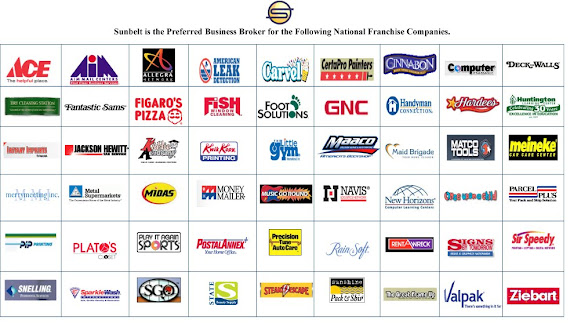Every business, no matter how small, needs to have standards, and developing your own set of policies and procedures (often called an operations manual) will help your business run more smoothly— especially when you can't be there.
It's important to have a written system in place when you begin to hire employees, as you'll want others to understand every detail of how you want the business run. For instance, how do you like customers greeted when they come in the door? Or what day of the month do you order supplies from a vendor? Where do you keep the extra set of keys to the storage room?
Every operations manual is different, so there's no exact formula to follow. You'll want to create one that essentially maps out exactly how things get done in your specific business. Start with your company's mission statement, the products and services it offers, and any goals or values about your business that you may wish to communicate to others. Include an organizational chart and job descriptions. After that, you may want to break instructions down into distinct areas, including:
■How-to procedures, such as how to open and close your office, store, warehouse or other physical locations
■Phone numbers, e-mail addresses and other ways to reach clients, vendors, suppliers, insurance companies, the security company and other important contacts
■Business-related policies, such as whether you issue refunds or accept payment by credit card
The operations manual, essentially, is a tool kit for replicating your knowledge of your business and what you do on any given day. As your business grows, you may wish to have separate manuals for different departments or divisions. You might also develop a basic version for entry-level employees and a more detailed version (with sensitive information on finances, for example) for senior managers.
Click "Here" to view entire article
Helping You Buy or Sell a Business
HERBERT HOOVER
"Economic depression cannot be cured by legislative action or executive pronouncement. Economic wounds must be healed by the action of the cells of the economic body - the producers and consumers themselves."

Purchase a Business with Your 401k
Why? Because there are NO penalties, that’s right. This 401k Rollover program lets you use your 401k and other retirement funds to invest in a business – TAX AND PENALTY FREE. This is a safe, proven plan based on long standing provisions of the Internal Revenue Service (IRC § 6501). By using pre-tax retirement dollars to fund your business, you gain equity in your business and improve cash flow from day one. Use the funds to receive a salary during startup, while accelerating profitability by eliminating or reducing interest or debt. Application, creation, and funding is fast; typically (2-3 weeks or less). You can even set aside tax deductible retirement savings up to $200,000/yr. The benefits of using your 401k:-Minimize debt-Enhance cash flow-Stimulate business growth-Build equity-Take full advantage of tax benefits

- Indy Business Broker
- Noblesville, Indiana
- With over 16 years of business ownership, management and sales, Dave understands the needs of both buyers and sellers in confidential business transactions. As a former owner of a mortgage company, he also brings a unique perspective of the financing aspect of deal making. Since joining Sunbelt in 2004, Dave has represented a variety of companies in such industries as service, distribution and manufacturing. Dave has a reputation for successful transactions and consistently receives compliments from both buyers and sellers for his diligent work and adding tremendous value to the transaction process. In 2010, Dave successfully completed the necessary courses and requirements to be designated a Certified Mainstreet Business Broker (CMSBB). Dave’s education and experience includes: Indiana State University (Business Management), Indiana State (Securities Division) and Mortgage Brokers License (8 years). In his spare time, Dave and his family: Angela, Jayden (14) and Kade (12) enjoy family vacations and traveling, sporting activities and their local church. Contact Dave at 317.218.8626 or cell at 317.508.6690 dgorman@sunbeltindiana.com

Sunbelt Indiana Business Resource has been, and continues to be, the leading business brokerage in Indiana specializing in the marketing and sale of small and mid-size businesses. Consequently, our clients consider us more than business brokers. We serve as the business intermediary, strategist and advisor, giving us an objectivity that facilitates the entire transaction. As professional advisors, we maximize the market exposure of the business opportunity resulting in a mutually beneficial transaction for both seller and buyer. With more professional brokers on our staff than any other business brokerage in Indiana, the business is assured the maximum confidential exposure to the marketplace. In addition to our national presence through the Sunbelt Network, our extensive network of professional contacts among accountants, attorneys, bankers, venture and entrepreneurial sources also ensures that active buyers in the market are routinely, and in some cases exclusively, referred to us. Sunbelt Indiana Business Resource will provide business sellers a powerful set of solutions and services. In addition to traditional business brokerage, Sunbelt Indiana Business Resource will offer business valuation, equipment appraisal, new franchises, and hotel divestiture services. Buyers will be immediately exposed to in excess of 150 Indiana businesses available for acquisition, in excess of 10,000 businesses nationally, and over 50 franchisors looking to expand in Indiana.
We pledge to continue to provide the highest level of professional acquisition, divestiture, brokerage, and valuation services for Indiana's buyers and sellers.
We pledge to continue to provide the highest level of professional acquisition, divestiture, brokerage, and valuation services for Indiana's buyers and sellers.


Websites of Interest
Blog Archive
-
▼
2010
(71)
-
▼
January
(8)
- Entrepreneurship: No Experience Necessary
- Find Your Ideal Business in 5 Simple Steps
- Community Bankers Meet With Obama as Regulation Fi...
- Start-Ups Will Keep Struggling in 2010
- Another Chance for Small Business Loans?
- How to Write an Operations Manual
- Stimulus Relief Extended for SBA Loans
- 5 Ways to Grow in Any Economy
-
▼
January
(8)
Blog Stats
Available Franchises

